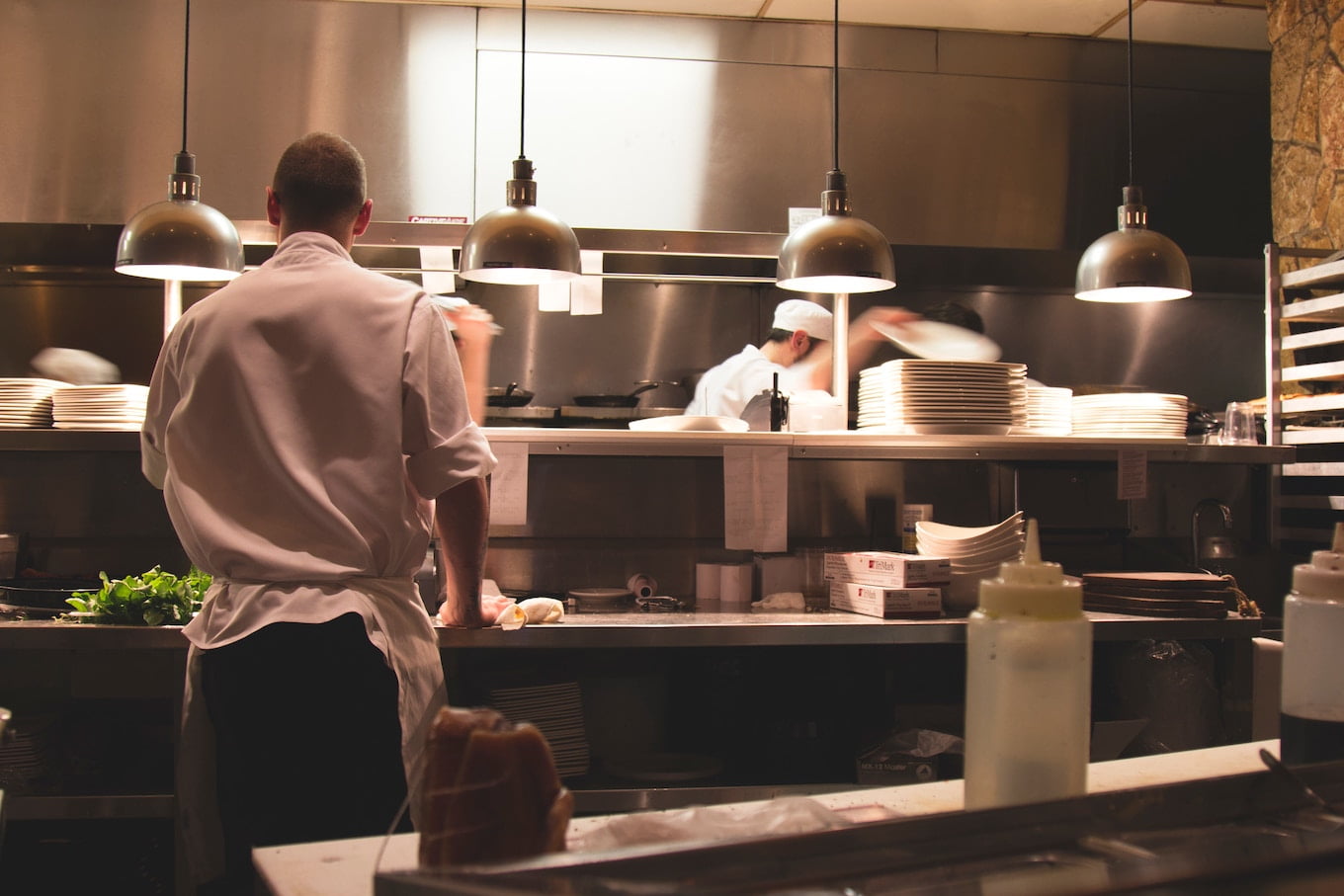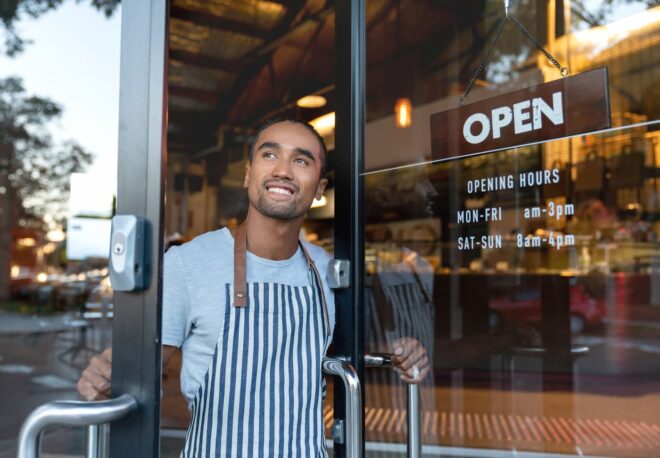How smart restaurants deal with rising labor costs
Editorial Team
6 min read
Good news for the economy: hourly wages are up by more than 3% for the ninth straight month, according to the US Department of Labor. And, in the restaurant industry, job growth is booming.
Wage growth and employment following the 2008 recession have been slow to recover. The restaurant industry is one of the few sectors where more workers are getting hired, as well as taking home bigger paychecks. According to Federal data, “restaurants added 317,700 jobs over the past year, and the industry now employs nearly 12.2 million people. The 2.7% increase in industry jobs is higher than the 1.7% increase for the broader economy.”
Higher hourly wages and more workers are both good things. Restaurant industry employees are some of the hardest working people out there—they deserve so much more than minimum wage. But, in an industry where the profit margins are notoriously tight, higher wages can make running a small business more complicated. Many restaurant owners report that labor costs are already accounting for 25% – 35% of their overall operating budget.
How can you continue to support your team with fair wages while still running a profitable business? Here’s what some restaurants are doing to deal with rising labor costs.
Increase efficiency with technology
IT solutions, like smart-POS systems, can help a restaurant increase efficiency, thereby increasing revenue. More revenue means a healthier profit margin, and therefore less stress over rising labor costs. Plus, labor efficiencies allow restaurant owners to shift investment into service-oriented tasks that customers can appreciate.
Integrate apps into your Clover POS system to streamline your business and give you an edge over your competition. Try one (or all!) of these restaurant apps to get started:
- MarketMan: this app gives you the ability to track the cost of goods sold, monitor inventory in real time, and place orders to suppliers at the touch of a button. It helps teams to manage inventory and re-stock precisely when needed, resulting in less waste and saving time and money.
- Time Clock by Homebase: stay ahead of the lunch rush by giving your staff the ability to swap shifts, get reminders before shifts, and more. When you need help quick, send a message out through the app offering bonus shifts for available staffers.
- Commerce Sync: save your managers time by automatically syncing daily sales from your Clover POS with accounting software like Xero and Quickbooks. The app has saved customers an average of 300 hours per year!
- SimpleOrder: this real-time inventory management app shows you low performing menu items, giving you the chance to replace them with better dishes (and save money in the process).
- BottleKeeper: input your cocktail recipes, as well as your starting inventory, and let the app track how much is left in each bottle. Get insight into how quickly your components are consumed and order ingredients at the right time.
None of these apps will replace the great customer service your team brings to the table (pun definitely intended). However, along with your POS dashboard, these tools can supercharge your operational efficiency and make sure all the restaurant’s moving parts synchronize perfectly.
Check your ingredient costs regularly
Food costs are on the rise. According to a 2018 report, food costs increased by 7.7% over the last two years. For many restaurants, more than 30% of the operating budget goes toward purchasing food and beverage ingredients. If your labor costs and food costs are starting to compete, the better option is to revisit your ingredients to find out where you’ve gone astray. Variances due to inconsistent portions, theft, or market price fluctuations are much easier to resolve than having to fire a great team member.
Experts recommend keeping a close eye on the costs supporting your menu, starting with your most-used kitchen and bar ingredients. You should also go through this actual cost v. ideal cost exercise to make sure your prices, portions, and other factors are giving you the best profitability possible.
Personalize your guest experience
Cities across the US are raising the minimum wage for hourly workers. Some restaurants have even begun to do away with tipping, instead paying servers a higher salary to close the wage gap between the front and back of house. Whether you choose to raise the hourly wage to meet a city’s minimum requirement, or if you wish to go gratuity-free, it’s still important to empower your servers to deliver a great customer experience. Without diners, there can be no servers.
Restaurants win by providing personalized service to each and every customer. Smart tools, like Clover’s POS system, can keep track of guests’ allergies or other preferences. Keep track of customer behavior, order history, and personal details like their birthday or anniversary. Each time a customer returns, your team has a new opportunity to surprise and delight your guests. All this data can help your servers make better tips, and keep loyal customers coming back for seconds and thirds.
Decrease staff turnover
One of the biggest labor costs, outside of payroll, is staff turnover. The turnover rate in the restaurant business is over 70%; Gallup estimates the average cost of turnover per manager for restaurants to be $13,867. It takes a fair amount of time to find, hire, and train a new team member—especially at this moment of record unemployment. Industry data collected in 2018 found that three-quarters of restaurants experienced more difficulty recruiting hourly employees than in years past.
Once you find great staff, make them want to stick around by building a great work environment, offering more long-term career prospects, and breaking down barriers between the front and back-of-house. Explore some of the ways communication can improve the server and kitchen experience with this free webinar. Proactively empower your staff to do their jobs well, and they’ll stay engaged—and employed—for much longer.
Decide if delivery is worth it
Some restaurant owners turn to delivery or takeaway as a potential separate revenue stream with lower overhead. The thought behind this? Delivery may have a higher profit margin, as labor costs, such as server time, aren’t relevant. Delivery apps like Foodora and GrubHub can bring in new customers, provide marketing support, and do the work of getting food from you to the customer. By some projections, food delivery in the US could reach $200 billion in sales over the next four years. It’s an enticing prospect for restaurants looking to add revenue.
However, there are some costs associated with delivery that may outweigh the benefits. Packaging costs can quickly add up, and service fees on these apps can reach over 30% of final customer checks, eating into your profit margin. Before diving into the world of delivery, check out some of these Clover-integrating apps and analyze your business numbers to see if the investment is worthwhile.
Related Posts
The 15 most profitable restaurant businesses to start in 2025
How to handle fame: A guide for small business owners with media success
Popular Topics
Stay in touch
Sign up and learn more about Clover.
Thank you for your subscription!
More posts about starting a small business
eBook





